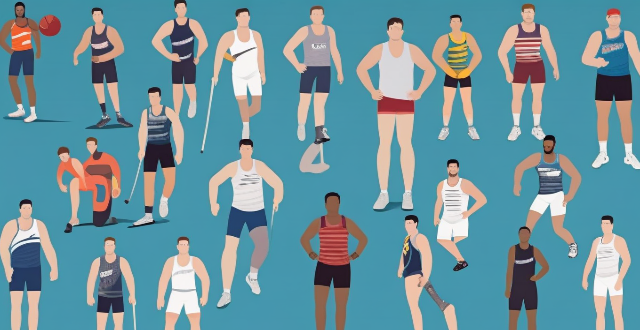Disabled athletes face physical barriers, societal attitudes, and lack of resources when participating in mainstream sports. These challenges include inaccessible venues, lack of adapted equipment, transportation issues, low expectations from others, discrimination, limited media coverage, funding constraints, limited training opportunities, and lack of support networks. Despite these obstacles, disabled athletes continue to demonstrate resilience and determination in their pursuit of athletic excellence. Raising awareness and advocating for greater accessibility and resources can help ensure equal opportunities for all athletes in mainstream sports.

Challenges Faced by Disabled Athletes in Mainstream Sports
Introduction
Disabled athletes face numerous challenges when participating in mainstream sports. These challenges range from physical barriers to societal attitudes and lack of resources. In this article, we will explore the various obstacles that disabled athletes encounter and how they overcome them.
Physical Barriers
One of the primary challenges faced by disabled athletes is physical barriers. Many sports facilities are not designed with accessibility in mind, making it difficult for athletes with disabilities to participate fully. For example:
- Inaccessible venues: Some sports venues may have steps, steep ramps, or narrow doorways that make it difficult for wheelchair users to enter.
- Lack of accessible equipment: Adapted sports equipment, such as modified wheelchairs or specialized prosthetics, may not be available or affordable for all athletes.
- Transportation issues: Public transportation systems often do not accommodate disabled individuals, making it difficult for them to travel to training sessions or competitions.
Societal Attitudes
Another significant challenge faced by disabled athletes is societal attitudes towards disability. Unfortunately, some people still hold negative stereotypes about disabled individuals and their abilities. This can lead to:
- Low expectations: Coaches, teammates, and even family members may underestimate the abilities of disabled athletes, leading to a lack of support and encouragement.
- Discrimination: Disabled athletes may face discrimination from coaches, officials, or other athletes who view them as less capable or deserving of equal opportunities.
- Media coverage: Disability sports often receive less media coverage than able-bodied sports, which can lead to a lack of recognition and appreciation for the achievements of disabled athletes.
Lack of Resources
Finally, disabled athletes often face a lack of resources compared to their able-bodied counterparts. This includes:
- Funding: Government funding for disability sports programs is often limited, making it difficult for organizations to provide necessary resources such as coaching staff, equipment, and training facilities.
- Training opportunities: Disabled athletes may have limited access to specialized training programs and coaches who understand their unique needs and requirements.
- Support networks: Many disabled athletes lack access to support networks, such as mentorship programs or peer groups, which can provide motivation and guidance throughout their athletic careers.
Conclusion
Despite these challenges, disabled athletes continue to demonstrate resilience and determination in their pursuit of athletic excellence. By raising awareness about these issues and advocating for greater accessibility and resources, we can help ensure that all athletes have the opportunity to participate in mainstream sports on an equal footing.